September 20, 2024
Revolutionizing Custom Engine Fabrication with HandySCAN BLACK Elite & VXmodel See the article3D measurement is a metrology process that uses different types of 3D measurement tools, such as 3D scanners, to collect 3D data from physical objects, such as their shapes, textures, geometries and colours. Scan-to-CAD and inspection software then extracts the 3D measurements from the 3D models for further analysis and processing.
What types of companies use 3D measurement? In a nutshell: any manufacturer that produces products can benefit from 3D measurements for their product development workflows and quality control processes. 3D measurement is used in many different industries, such as:
- Aerospace
- Transportation and automotive
- Consumer products
- Education
- Heavy industries
- Healthcare
- Heritage
- Oil and gas
- Power generation
3D measurement also plays a crucial role in additive manufacturing, also known as 3D printing. 3D measurements can speed up prototyping, as users don’t need to create physical prototypes from scratch. According to Frost & Sullivan, advanced metrology equipment, including 3D measurement solutions, is headed towards a significant growth stage, garnering revenues of nearly $300 million by 2024.
3D measurements explained
How does 3D measurement work? While it often requires the know-how and skills of an experienced metrologist, it is actually simpler than it looks—thanks to advances in simple 3D measurement technologies, like 3D scanners. Let’s take a look at the ways you can measure an object in 3D.
How to measure an object in 3D
With any physical object, you can measure its height, width, depth, diameter and circumference, depending on the object. However, an object actually has an array of varying measurements, regardless of the the object’s shape and complexity (non-linear edges, free from shapes, angles).
As a result, in order to create high-quality products that meet certain standards and perform optimally over time, designers, product development teams and quality control inspectors need to use 3D measurement solutions to properly assess an object in 3D.
By capturing all the physical measurements of an object in 3D, manufacturers can ensure that parts are designed properly to fit together, optimize designs and tolerances, improve engineering processes and tooling, and cut costs associated with scraps, product recalls and production downtimes.
Oftentimes, a 3D scanner is used to capture 3D measurements and spatial relationships on physical objects. 3D measurement technologies can be used for product development and for quality control inspections.
Discover a concrete application of the importance of accurate 3D measurements
Find out how KTM is pushing its limits
Why is 3D scanning the future of measurement?
3D scanning is a non-destructive 3D measurement method that uses laser lights to capture the shape, size, geometries, and textures of physical objects. In other words 3D scanners replicate physical objects in the digital realm. By creating point clouds of data, 3D scanners can measure the finest details of an object for product development and quality control workflows.
3D scanning is about the easiest, fastest and often the most affordable way to conduct 3D measurements.
In addition, 3D scanners offer the unprecedented accuracy and fields of view required for even the most stringent industries when it comes to compliance, like the automotive and aerospace sectors. In fact, 3D scanning can streamline product development and quality control operations to such a degree that what used to take days—if not weeks—now only takes a mere few hours.
Adding to the growth of 3D scanning is manufacturers’ transition to Industry 4.0. Industry 4.0 is known as the automation of various processes to improve productivity and product quality. These trends are also driving the adoption of 3D scanning technologies as robotic systems are being deployed on production lines.
Many manufacturing pundits and researchers agree: the global market for 3D scanning technologies is projected to reach $6.1 billion by 2025.
Read about another example about the benefits of 3D measurements
How are 3D measurements of objects used in product development?
There are many ways that 3D measurement can be leveraged to mitigate several issues in the entire product development process.
For one, product designs are often based on existing products that may not even have a CAD model available. Other designs need to incorporate new parts. Thanks to 3D measurements, product development teams can reverse engineer a product much faster and more accurately to carry out design changes and rapid prototyping. 3D measurement can almost always eliminate unnecessary design iterations and optimize material use.
By efficiently streamlining the product design process and ensuring their products perform according to spec, manufacturers can successfully accelerate their time to market.
How are 3D measurements of objects used in inspections and quality control?
Did you know that 3D measurement can also be used for 3D inspections to improve the quality of a prototype and final product?
3D scanners, for example, capture millions of data points in seconds, which means all part and assembly dimensions can be considered to assess the quality of a particular product.
As a result, inspection teams can conduct root cause analyses more swiftly and identify quality problems before they impact major production runs. With highly accurate inspection reports, first article inspections (FAIs) on parts of any size or complexity can be significantly simplified.
Read about another example about the benefits of 3D measurements
Explore a 3D measurement case study for quality control
3D measurement tools
3D measurement can be carried out using traditional equipment, including fixed coordinate measurement machines (CMMS) and basic tools, such as calipers and gauges. However, there are many disadvantages to these approaches.
Depending on the tool that is used, they can be limited in measurement speed, mobility, coverage and accuracy. They cannot be incorporated in any automated workflows, such as automated quality control processes.
They are dependent on users’ skill and efficiency; in a tight labour market, it can even be difficult to find and train the right staff for more complicated methods.
On the flip side, 3D scanners overcome all of these challenges thanks to their unbeatable performance with respect to measurement speed and portability as well as their data accuracy, reliability and repeatability. Some optical CMM scanners can even be used in quality control applications.
3D scanners
Contrary to traditional contact 3D measurement tools, such as legacy CMMs, touch probes and articulated arms, 3D scanners are non-contact solutions, which means they can collect data from an object in 3D without touching it.
There are several different types of 3D scanners that can be distinguished based on the technology used to capture data. Here are some of the best 3D scanning technologies available:
-
- Laser-based 3D scanners: These scanners cast a beam on the object so that a camera can record where the beam and object come together. High-end laser-based 3D scanners are extremely fast and provide great accuracy and resolution.
-
- Structured-light 3D scanners: Also known as white-light scanners, these scanners project light and shade patterns on an object while taking images from several positions with a camera to create the mesh. Portable structured-light 3D scanners are also very fast and easy to use, regardless of where the part is located.
- Photogrammetry: These 3D scanners use coded targets to snap multiple images of an object in various positions and triangulate the points to create the 3D model. They are often conducive for measuring larger objects.
3D scan to CAD software
What does 3D scan to software do?
It’s relatively “simple.” Scan to CAD software is a post-treatment software that allows users to further process and prepare 3D scan data to create 3D models in a CAD solution, such as SolidWorks, SketchUp, Rhino 3D and more, or sent directly to a 3D printer.
3D scan to CAD post-treatment software, like VXmodel, offers a simple and easy process to finalize 3D scan files to be used in any type of 3D printing application, including industrial-grade 3D printing or CAD-based workflows. Because most 3D scan to CAD solutions are integrated with 3D scanning technologies, manufacturers don’t need any third-party software.
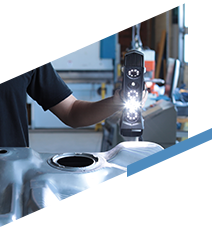
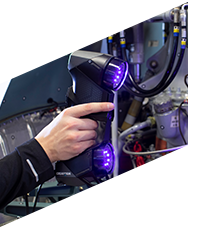
There are many different 3D scanners that can acquire accurate 3D measurements
A final word on 3D measurement and scanning solutions
As you can see, 3D measurement technologies are a definitive game changer when it comes to enhancing a manufacturer’s product development and quality control processes.
3D measurement solutions, such as 3D scanners, can increase the overall quality and performance reliability of products. They can also reduce product development and inspection times so that products can hit the market sooner. And in the era of Industry 4.0, 3D measurement tools on robot-mounted systems are an invaluable configuration that can be incorporated within a manufacturer’s path to automated quality control.

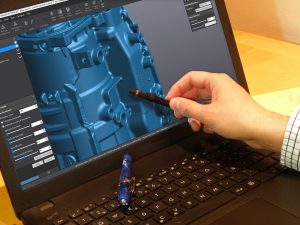
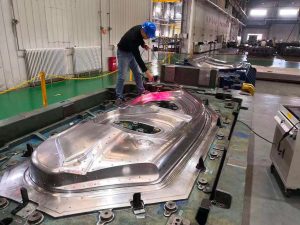
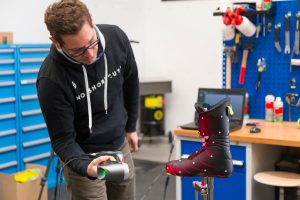
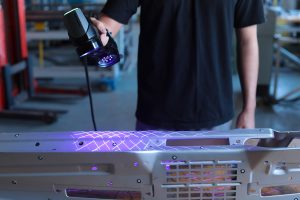
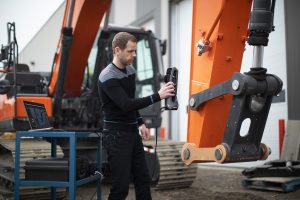








22 Dec '21
METROLOGY as a means for Motorbike Optimization - Everything About Metrology
[…] the aerodynamics. To maximize the ergonomics and aerodynamics, designers and engineers used 3D measurement instruments, with precise 3D measurements, that could scan the whole bike, including the […]